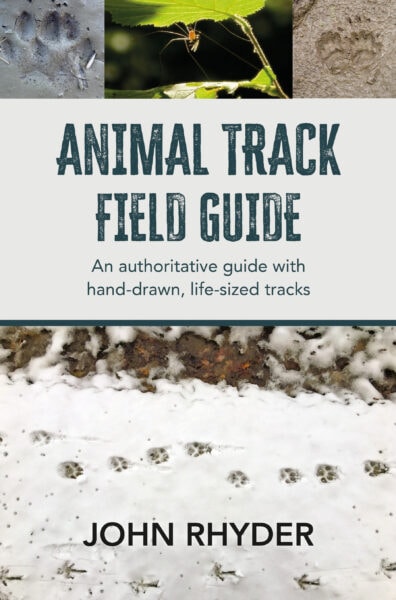Both this and the larger volume represent an immense amount of time in in field and at home trying to define track and sign accurately. Captive animals have been asked to stand in sand traps and ink traps to reveal their footprints. Trail cameras have been placed next to kills, holes and rubs to discover the architects of numerous bits of sign. Hours of serious head scratching have ensued in woods, pubs and around coffee tables both alone and with trackers from across the Northern Hemisphere.
This guide contains life sized drawings of 130 of the UK and Europes native, domesticated and exotic mammals and birds ranging from the the smallest to the largest. included are almost together with reptile and amphibian tracks and common insects.
The book is ring bound so it can be laid flat on the ground for direct comparison.
COMING SOON: A NEW AND REVISED SECOND EDITION WILL BE AVAILABLE SHORTLY.
Please note postage costs may vary outside of the UK please contact us before buying.
Read Customer Reviews for Animal Tracks Field Guide
Josh Hemingway
John Rhyder has guided hundreds, if not thousands of people, in the practical study of nature. His bushcraft and natural history courses are renowned for their down-to-earth approach, to a subject often shrouded in myth and fantasy.It’s fitting then that the Animal Tracks Field Guide, the second of Rhyder’s books on natural lore, is equally down-to-earth and practical. As a field guide it surpasses most others of its kind in its simplicity and usability; the pages are all coated with a weatherproof film, so that mud and water can slide off easily; there is a simple wire binding, so that the pages to be folded back without damaging the spine; the covers have metric scales printed down them, to allow quick measurement of tracks and spoor; and the whole thing is compact enough to stow in a cargo pocket. Simple and practical it may be, but it’s certainly not lacking in detail. The tracks of every commonly encountered British mammal are included, as well as a large number of bird species and invertebrates.The contents pages read more like a key than a guide, listing animals by class, order, family and species, so you don’t have to flick through every picture before finding a match.
Care has been taken with the illustrations to ensure that they resemble tracks rather than footprints. In truth, it’s rare that a whole print will be revealed. Presenting tracks as a series of shapes, Rhyder prepares you for the reality of what you may see on the trail. Ever the teacher, Rhyder has given common and scientific names to each specimen, and ensured that both forefoot and rear foot are represented. He also gives a useful (if brief) instruction on how to properly read a track.
If you’re expecting long descriptions of substrates, anecdotes about tracking, or lots of wildlife photography, then this is not the book for you. However, if you’re serious about improving your understanding of tracking, and want a practical guide to British wild animal tracks, then look no further.
Intended as a companion to a much more exhaustive manual on British wildlife, nevertheless the Animal Tracks Field Guide still works as a standalone volume. Above all else, it encourages the reader to pull on their wellies, get out into the woods and experience nature first hand.
John Rhyder’s “Animal Tracks Field Guide” represents a step-change in the resource available to professional ecologists and amateur naturalists within the UK. The level of detail and comprehensiveness of his footprint drawings has come out of a lifetime’s career working in and with nature, coupled with nearly a decade of more intensive study of animal tracks and signs. As an accomplished naturalist and educator, he instinctively recognises what the field ecologist needs in a practical field guide: accurate, life-size drawings on laminated pages that are ring-bound to allow them to be laid flat next to a track. Ideal! And there’s even a ruler on the inside of both covers. This is not a book to be read, it’s a book to be used and should live within every serious tracker’s rucksack.
Richard Andrews, MA Cantab, CEnv, MCIEEM, Consultant Ecologist and Tracker.
It’s landed and what a brilliantly laid out field guide I’ve been waiting for this ever since hearing about it on an FSC course led by John Rhyder (an incredibly good course). Also, the first thing I’ve won since primary school. Cannot wait for the accompanying larger work to be available to buy as well. Some things are definitely worth waiting for and a lot of thought has clearly gone into this
John Amos
Well now. This weather proof guide just arrived from the magnificent John Rhyder at the Woodcraft School!
I’ll have this out with me in the woodland next time. Loads of water bird-life and mammals from deer to mice out there.







